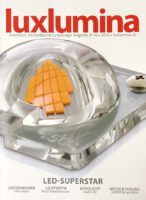The aesthetic effect of architectural color is determined by the interaction of material color and the influence of light in the built space. The atmospheric effect of the color changes with the angle of the sun to the component, with the season, the time of day and the weather. Paintings and color prints on unstructured paper or representations on computer monitors are only meaningful if planners and designers know all the influencing factors and can assess their spatial effects.
Seminar contents
- Perception and interaction of color, light and space
- Biological and cultural functions of color & light
- Experiments on the interaction of light and shadow,
- additive light mixing, colored light and colored shadows
- Light and color as design elements, dramaturgy, character
- Important lighting parameters for color design
- Overview of artificial light and light sources
- Current examples from practice
Learning objectives
- Recognizing the interaction of color and light
- Understanding the functions of color and light
- Know basic lighting parameters and be able to make practical references to color design in the room
- Be able to use light and color as design elements
- Know current light sources and be able to assess their qualities for interior design
- Ability to participate in current topics of practice in color and lighting design
Methodology
- Presentation, dialog, discussion, presentation
Registration
Organizer: RAL AKADEMIE (Bonn)
Contact: Farbseminare@RAL-AKADEMIE.de
Registration and further information: Link to the RAL Academy homepage



